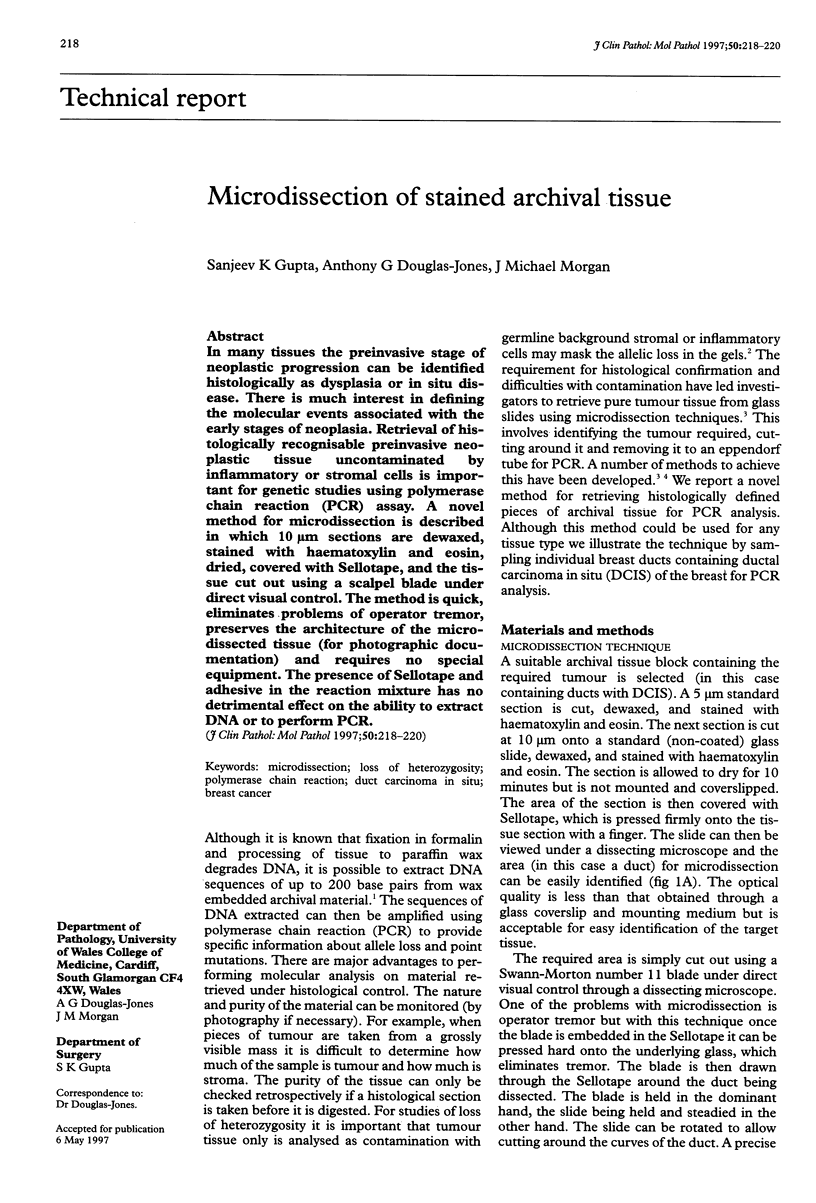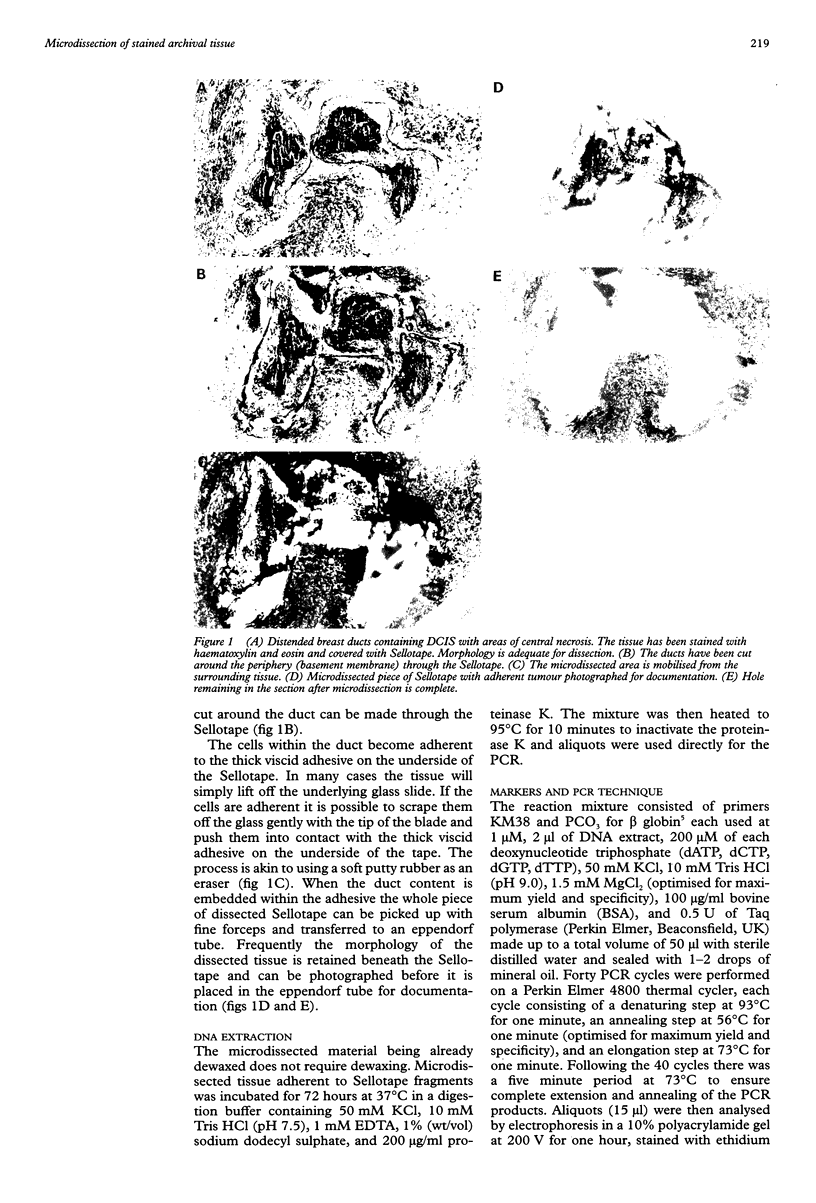Abstract
In many tissues the preinvasive stage of neoplastic progression can be identified histologically as dysplasia or in situ disease. There is much interest in defining the molecular events associated with the early stages of neoplasia. Retrieval of histologically recognisable preinvasive neoplastic tissue uncontaminated by inflammatory or stromal cells is important for genetic studies using polymerase chain reaction (PCR) assay. A novel method for microdissection is described in which 10 microns sections are dewaxed, stained with haematoxylin and eosin, dried, covered with Sellotape, and the tissue cut out using a scalpel blade under direct visual control. The method is quick, eliminates problems of operator tremor, preserves the architecture of the micro-dissected tissue (for photographic documentation) and requires no special equipment. The presence of Sellotape and adhesive in the reaction mixture has no detrimental effect on the ability to extract DNA or to perform PCR.
Full text
PDF


Images in this article
Selected References
These references are in PubMed. This may not be the complete list of references from this article.
- Bianchi A. B., Navone N. M., Conti C. J. Detection of loss of heterozygosity in formalin-fixed paraffin-embedded tumor specimens by the polymerase chain reaction. Am J Pathol. 1991 Feb;138(2):279–284. [PMC free article] [PubMed] [Google Scholar]
- Martin J. E., Swash M., Mather K., Garofalo O., Dale G. E., Leigh P. N., Anderton B. H. Microdissection: a novel method for the study of intracellular inclusion bodies. J Pathol. 1990 Jan;160(1):77–79. doi: 10.1002/path.1711600115. [DOI] [PubMed] [Google Scholar]
- Slack D. N., McCarthy K. P., Wiedemann L. M., Sloane J. P. Evaluation of sensitivity, specificity, and reproducibility of an optimized method for detecting clonal rearrangements of immunoglobulin and T-cell receptor genes in formalin-fixed, paraffin-embedded sections. Diagn Mol Pathol. 1993 Dec;2(4):223–232. [PubMed] [Google Scholar]
- Stratton M. R., Collins N., Lakhani S. R., Sloane J. P. Loss of heterozygosity in ductal carcinoma in situ of the breast. J Pathol. 1995 Feb;175(2):195–201. doi: 10.1002/path.1711750207. [DOI] [PubMed] [Google Scholar]
- Zhuang Z., Bertheau P., Emmert-Buck M. R., Liotta L. A., Gnarra J., Linehan W. M., Lubensky I. A. A microdissection technique for archival DNA analysis of specific cell populations in lesions < 1 mm in size. Am J Pathol. 1995 Mar;146(3):620–625. [PMC free article] [PubMed] [Google Scholar]




